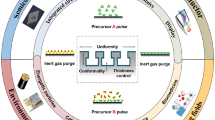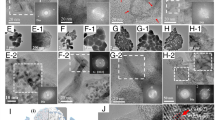Abstract
Research on materials grown by pulsed laser deposition, or PLD, has experienced phenomenal growth since late 1987 when T. Venkatesan (one of the authors for this issue) and co-workers pointed out that extreme nonequilibrium conditions created by pulsed laser melting of YBaCuO allowed in-situ preparation of thin films of this high transition temperature (Tc) superconducting material. Since then, PLD has emerged as the primary means for high throughput deposition of high-quality superconducting thin films for research and devices. This probably came as no surprise to J.T. Cheung (another of this issue’s authors), who performed original research in this area and tirelessly labored during the 1980s to convince a skeptical audience of the advantages of PLD.
Along with the success of PLD in the arena of high-temperature superconductivity, however, is the explosion of activity in the deposition of many other materials, made possible by the unique features of pulsed laser deposition, materials previously not amenable to in-situ thin film growth. Creative minds reasoned that since PLD can deposit a demanding, complex material such as the perovskite structure Y1Ba2Cu3O7-δ, why not other perovskites or multicomponent oxide materials? It also turns out that the range of properties of multicomponent oxides is virtually limitless. They can be metallic, insulating, semiconducting, biocompatable, superconducting, ferroelectric, piezoelectric, and so on. One is not limited to the properties of elements or binary compounds on which the electronics and microelectronics industries are based. Indeed, in a recent review of hybrid ferromagnetic- semiconductor structures, G. Prinz states, “… there has been little work devoted to incorporating magnetic materials into planar integrated electronic (or photonic) circuitry there are potential applications that have no analog in vacuum electronics but that remain unrealized, awaiting the development of appropriate materials and processing procedures.” In pulsed laser deposition, we may well have in hand the “appropriate processing procedure” to deposit sequential epitaxial layers of high quality materials that possess profoundly different properties.
Similar content being viewed by others
References
Prinz G.A., Science 250 (1990) p. 1092.
Otis C.E. and Dreyfus R.W., Phys. Rev. Lett. 67 (1991) p. 2102.
Ritter J.C., Nisenoff M., Price G., and Wolf S.A., IEEE Trans. Magnet. 27 (1991) p. 2533.
Maple M.B., MRS Bulletin XIV (1) (January 1989) p. 20.
Rights and permissions
About this article
Cite this article
Hubler, G.K. Pulsed Laser Deposition. MRS Bulletin 17, 26–29 (1992). https://doi.org/10.1557/S0883769400040586
Published:
Issue Date:
DOI: https://doi.org/10.1557/S0883769400040586




